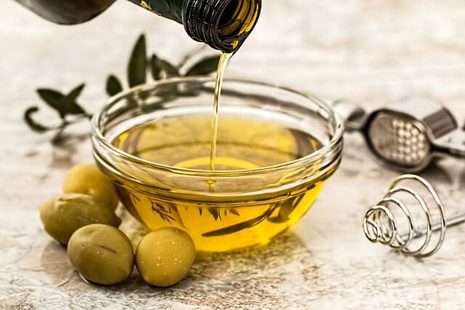Les huiles ont de tout temps constitué un élément important de notre alimentation. Cependant, comme la plupart des aliments actuels, elles ont subi une évolution dans leurs méthodes de fabrication et par conséquent dans leurs qualités nutritionnelles.
De nos jours, la fabrication industrielle, le raffinage et les divers traitements chimiques qu’elles subissent provoquent leur dénaturation et une perte nutritionnelle non négligeable. Rappelons que certains acides gras essentiels (AGE) au bon fonctionnement de notre organisme ne peuvent être synthétisés par le corps et doivent dès lors être amenés par l’alimentation. Cela concerne particulièrement l’acide linoléique ou Ω-6 (oméga-6) et ses dérivés, ainsi que l’acide alpha-linolénique ou Ω-3 (oméga-3) et ses dérivés.
Ce qui fait la difficile entre l’extraction industrielle et artisanale, c’est justement cette richesse en ces deux éléments vitaux. Avant 1940, le procédé d’extraction artisanale fournissait des huiles alimentaires vierges et de première pression à froid. Durant, et après la guerre, les fabricants d’huiles furent invités à produire davantage à partir de la même quantité de graines disponibles. C’est ainsi qu’est apparue la méthode d’extraction industrielle par simple souci de rendement.

Sous le couvert de la rentabilité, les nouvelles méthodes industrielles, en plus d’une pression à chaud, font subir aux huiles divers traitements chimiques à base d’additifs, de pétrole, etc. La surchauffe génère des huiles insipides, inodores et incolores, dépourvues de qualités énergétiques et nutritionnelles. Actuellement, la majorité de la population consomme ces huiles dépourvues de goût et de saveur, mais surtout « mortes » puisqu’elles n’apportent ni vitamine, ni élément nutritif, ni acides gras essentiels.
Pour conserver tous leurs principes actifs, les huiles végétales doivent être pressées mécaniquement et à des températures voisines de 30° à 40°C maximum.
Si ce n’est pas le cas, cela entraînera une carence en acide linoléique et en acide alpha-linolénique dont la forme naturelle biologique active est aussi connue sous le nom plus général de vitamine F. Cette vitamine F doit inévitablement être couplée à la vitamine E afin de bénéficier de ses propriétés antioxydantes. Malheureusement, la vitamine E est elle aussi fragile et détruite par ces procédés agressifs de raffinage et de surchauffe.
La vitamine F influence notre système immunitaire et apparaît comme un facteur essentiel pour le maintien de son équilibre. Sa carence s’exprime dans nos populations par une forte augmentation des phénomènes allergiques et de maladies dégénératives.
Le chef de file des AGE, l’acide alpha-linolénique ou Ω-3 (oméga-3), se trouve essentiellement dans l’huile de lin et en plus petite quantité dans l’huile de noix et de colza. Pour fonctionner harmonieusement, le corps a non seulement besoin des AGE mais il a aussi besoin d’acides gras polyinsaturés non essentiels. Ceux-ci viennent de l’alimentation mais également de la conversion métabolique des Ω-3 (oméga-3) et des Ω-6 (oméga-6), ce qui nous en fait d’autant mieux comprendre leur importance métabolique. Les apports journaliers conseillés pour l’acide alpha-linolénique sont de 1,4 à 2,8 g par jour. Or, suite aux changements de fabrication d’après-guerre, notre alimentation de type occidental présente une augmentation croissante d’oméga-6 au détriment d’une diminution d’oméga-3. Le ratio entre ces deux huiles varie de 10/1, 25/1 jusqu’à 40/1. Rappelons que ce rapport fonctionnel optimum doit être de 4 d’ω-6 pour 1 d’ω-3.



